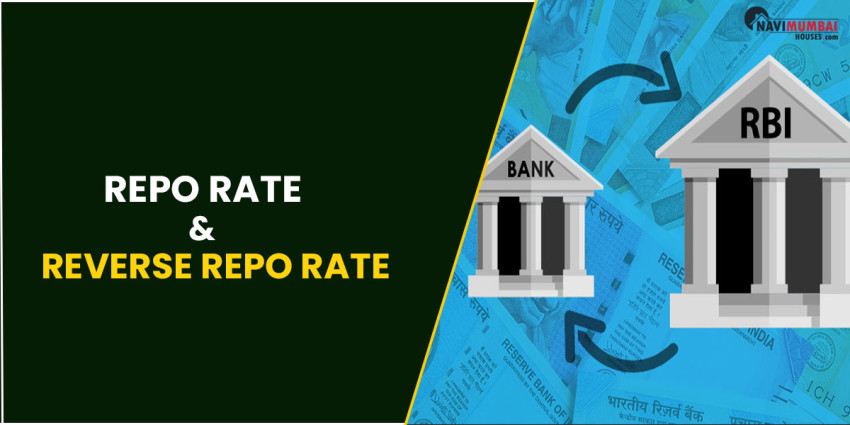
Home loans are directly impacted by the repo rate and reverse repo rate. Learn the meanings of repo rate and reverse repo rate in this blog post, as well as the current repo rate.
Latest News on Repo Rate and Reverse Repo Rate (February 2023)
Repo rates have raised by 25 basis points thanks to RBI (Reserve Bank of India) (BPS). The repo rate is currently 6.50%, up from 6.25%. To reduce retail inflation, it has been decided to raise the repo rate. The repo rate was raised by 35 basis points in December 2022. The Monetary Policy Committee (MPC) further predicted a 6.4% GDP increase for the next fiscal year. Inflation in the retail sector is predicted to be 5.3% in FY24.
Home loan rates will increase when the repo rate rises. Increased EMI is a direct outcome of rising home loan interest rates.
"The rising repo rate will undoubtedly have an impact on house affordability. Repeated rate increases may momentarily put off making a purchase, but they have little impact on the market for housing as a whole. The little increase in cost of purchase would eventually average out and be surpassed by a steady growth in capital values at a time when the real estate sector is exhibiting recovery and a robust rebound led by end-users. According to our estimates, the demand for luxury property is larger than that of other market sectors, thus the increase will have minimal effect here.
Are you looking flat for 2BHK Rent Rabale?
Reverse Repo Rate and Repo Rate
Have you ever given any attention to the process a bank uses to determine the interest rates on loans or savings instruments? Depending on the decision made about the consumer interest rate, the Central Bank of India and Reserve Bank of India lend money to commercial banks at a specified rate. The Monetary Policy Committee (MPC) announces monetary policy every few months. Due to the coronavirus epidemic, RBI held the repo rate same for the last two years. While the reverse repo rate is now at 3.35%, the repo rate was raised by 25 basis points to 6.50% in February 2023.
Given how intertwined our globe is, macroeconomic issues are to blame for the minor decline during the current quarter. The benchmark interest rate rise by the US Federal Reserve, which was increased by 0.75%, is the largest since 1994 and has had a significant impact on international markets. Due to this, the Reserve Bank of India (RBI) increased the REPO rate by 50 basis points, which prompted most Indian banks to raise the interest rates on house loans, increasing the cost of mortgages. Real estate buyers are hanging onto their cash at this time due to this aspect, along with the intermittent Sensex drop that affects mutual fund investments.
Repo Rate and Reverse Repo Rate definitions
The Monetary Policy Committee (MPC) makes decisions about the Repo Rate and Reverse Repo Rate during its bi-monthly meetings. The Governor of the Reserve Bank of India is in charge of the Monetary Policy Committee. The Central Bank of India is being run by Shaktikanta Das (Reserve Bank of India). Let's define what the terms repo rate and reverse repo rate mean.
Repo Rate
The word repo rate refers to the price at which the Reserve Bank of India (Central Bank of India) loans money to commercial banks in the case of a cash shortage. It is also known as a repurchasing option or repurchasing agreement. The same rate is also applied to control inflation. If there is inflation, the RBI raises the repo rate to deter commercial banks from borrowing money from the Indian Central Bank. Commercial banks' refusal to accept funds from central banks limits the amount of money in circulation and aids in the management of inflation. If there is no inflation in the nation, on the other hand, the opposite position is adopted.
Repo Rate in Reverse
The rate at which Indian commercial banks lend money to the RBI is the definition of the term "reverse repo rate." The Monetary Policy Committee determines it at a bimonthly meeting. The rationale for the commercial bank's borrowing is that, in exchange, RBI will grant them a competitive interest rate on any excess funds. The reverse repo rate and money supply are inversely correlated; when the reverse repo rate falls, the money supply rises and vice versa.
What distinguishes the repo rate from the reverse repo rate?
Repo rate and reverse repo rate are different in that:
• The rate at which the RBI loans money to commercial banks is known as a repo rate.
• While commercial banks can deposit surplus cash to the Reserve Bank of India at the reverse repo rate and get interest in return.
• These rates are yearly compounded.
• A repo rate example is shown below: For instance, if HDFC Bank borrows Rs 10 crore from RBI at a rate of 4.40%, HDFC Bank would be required to return the loan with Rs 10.24 crore after a year.
• An illustration of a reverse repo rate is provided here: For instance, if Axis Bank deposited Rs 10 crore in excess cash with the RBI at a rate of 3.35%, Axis Bank would receive Rs 10.34 crore in return from the RBI after a year.
RBI's Lending Procedure for Commercial Banks
All commercial banks are not eligible for loans from the Reserve Bank of India. The RBI first verifies the securities and bonds. Once the loan has been paid back, including the interest charged based on the repo rate, it will maintain these as collateral. RBI has the right to sell the securities if the bank is unable to make payments.
Effects of Reverse and Repo Rates on the Economy
The repo rate and reverse repo rate fluctuate often, as we covered previously. The economy is impacted by these two rates. Let's examine the effects of change.
Effects of the repo rate
A repo rate is a crucial tool for the nation's economic growth. Additionally, it significantly affects the nation's inflation and aids in keeping the money supply and liquidity under control. In order to stop the flow of money, the RBI raises the repo rate when inflation is excessive. Banks will incur greater borrowing costs when the rate is higher. Additionally, it slows down the economy's money supply and investment. It therefore has a detrimental effect on the economy and aids in containing inflation.
The repo rate is lowered if the RBI needs to inject money into the economy. Commercial banks are urged to borrow money from the RBI rather than lending it to other people in this way. The economy's total growth rate is enhanced in this way.
Reverse repo rate's effect
When the Reserve repo rate is higher, the economy is affected. Commercial banks decide that it is more practical to deposit the money with the RBI in this situation than than lending it to individuals for various uses. Additionally, they might receive favourable interest. The rupee's value will increase as a result of all these developments. The reverse repo rate is also used to manage inflation by being raised when inflation is low and lowered when inflation is high.
The demand for house loans is another area where a change in the reverse repo rate may be detected. Banks favour lending to individuals and lower home loan rates when the reverse repo rate is higher.
What does RBI monetary policy entail?
The country's financial system is being strengthened by the RBI Monetary Policy, which also serves to stimulate the economy. It is a monetary policy created by the Reserve Bank of India (Central Bank of India) to control the nation's financial affairs. It regulates the availability of funds, the cost of credit, interest rates on loans, and the distribution of credit. The RBI's monetary policy is typically reviewed six times during the fiscal year. The RBI's monetary policy has three primary goals.
• Economic growth
• Exchange rate stability
• Control of inflation
Repo Rate and Reverse Repo Rate in Concluding
The Central Bank of India's RBI lends money to other commercial banks at a rate known as the repo rate. In contrast, the reverse repo rate is the rate at which commercial banks can deposit excess cash with the RBI and receive a competitive interest rate. The current repo rate is 5.90%, while the reverse repo rate is 3.35%. The RBI governor preside over a bimonthly meeting of the Monetary Policy Committee (MPC), which decides these rates.
Source From:- navimumbaihouses






